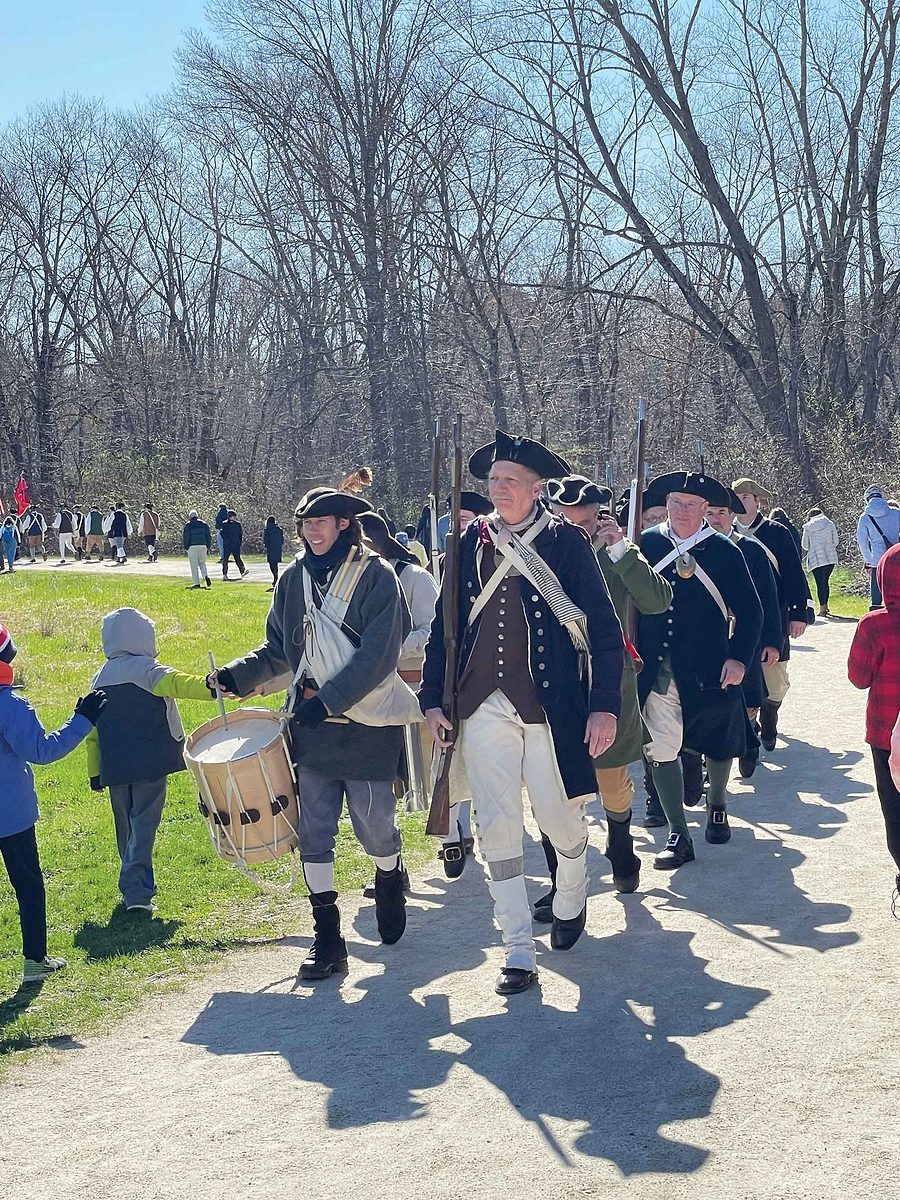Each year in April, scores of marchers, many dressed in colonial garb, make their way on foot from several towns in central Massachusetts to the Old North Bridge in Concord. These men, women, and children walk in the footsteps of the American colonists who made this journey on the same morning in April over two centuries ago. These “minutemen,” so called because they pledged to be ready for military duty at a minute’s warning, were local farmers, merchants, and laborers who were ready to risk lives for the noblest of causes: liberty.
I have taken part in this ten-mile walk for about thirty years, starting from my former home in Acton. The journey can be both an assault on and a feast for the senses. When I make my way to the assembly point at the town green, I jump at the sound of muskets punctuating the quiet morning. A little closer and I can pick out the light notes of fifes and the heavier beat of drums. My heart quickens in anticipation of the events to follow and also in fear that I may be arriving too late. As I take my place alongside my neighbors the pungent smell of gunpowder peppers my nostrils.
I have learned that dressing in warm layers of absorbent clothing is necessary as there can be a fifty-degree range in temperature on this spring day in New England. Except for short stretches of a wooded area, most of the walk is on a hard, paved surface. My choice of inappropriate footwear on my first march left me limping like a wounded soldier. The bare trees provide no leaf cover and so forgetting a hat or sunblock will remind you how merciless the bright sun can be.
My great delight in this event is experiencing early spring in New England. The path of the Minutemen meanders through fields, farms, and clusters of homes. I take in the miracle of the transformation that happens each year at this time. Spring works its way from bottom up, turning brown fields to green and patches of weeds into brilliant yellow daffodils. Although the trees are still brown and bare, one can almost sense life ready to spring forth.
I carry a mental checklist of all the things I am accustomed to seeing and tick them off as I encounter them. Somehow the day will be marred if each of these landmarks are not taken in and acknowledged: paddocks of grazing horses spooked by the musket volleys and children wearing small tri-cornered hats and waving flags. I seek out Barrett’s Mill Farm and their recently plowed fields, where on this day in 1775 a cache of colonial weapons was hidden in the fresh earth.
As we reach the Old North Bridge, I hear the fife and drums of other groups who are arriving. At the signal, the reenactment of the battle commences, and we recoil from the sound of the muskets, cheer our compatriots, and jeer at the redcoats who eventually retreat.
From there it is a quarter of a mile walk to the Colonial Inn at Concord Center, where I would meet my husband who patiently awaited me each year. His face always expressed pride that I had completed this walk which he could not take himself, and he would listen with interest to my story of the sights and sounds along the way. The Inn has been standing since before the Revolution where we address our hunger, feasting there as though I have walked a hundred miles and not ten. We have always timed it perfectly so that we finish our sumptuous breakfast in time to catch the parade as it passes around Concord’s town green. I know which marching bands I will see and what they will play; I seek out my favorite fife and drum corps and feel as though I should salute the parade of soldiers representing each subsequent war.
I return home, wishing the day would not end and regretting that I have to wait another year for it to come again. I am grateful to have legs that will take me there, friends and neighbors who will accompany me, the man I so loved who would meet me at its conclusion. Most of all I consider myself blessed to live in and near such beautiful and historic New England towns.


